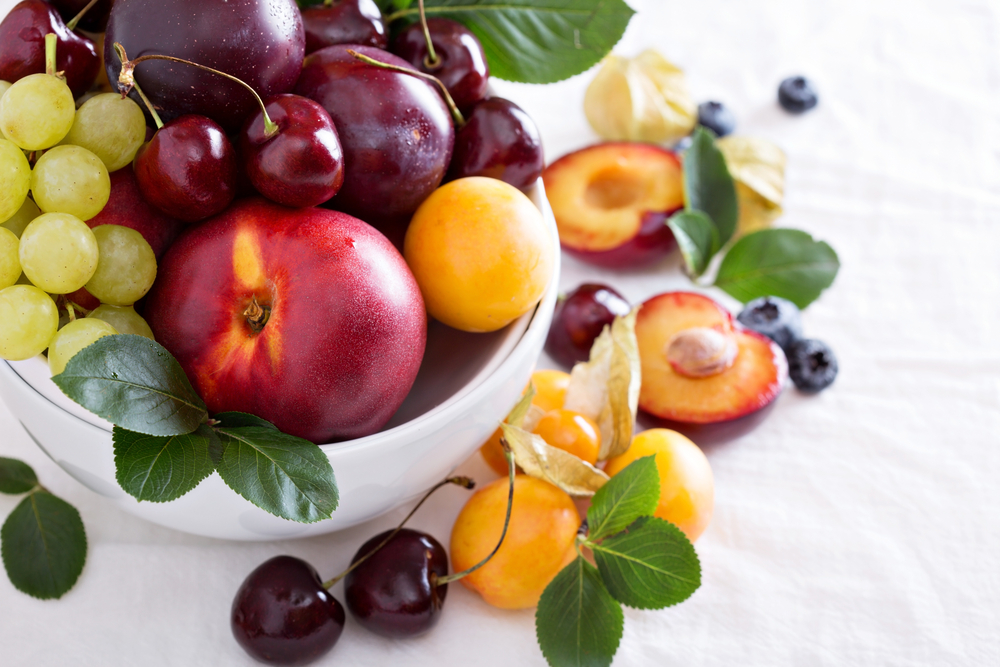July Superfood: Stone Fruits
July is here, which means we are all about stone fruits! Summer is the peak season for these delicious fruits, which include peaches, nectarines, plums, lychees, mangoes, and cherries.

Here are some more interesting facts about these versatile fruits:
- Do you know how stone fruits got their name? The name “stone fruit” refers to the hard, stone-like, covering that surrounds the seed of these fruits. This single seed acts as a passage way for nutrients to flow from the tree to the fruit and as a sturdy support system as the fruit hangs from its stem on a tree branch.
- When choosing your stone fruits, lookout for two different varieties – clingstone and freestone. Clingstone fruits are typically eaten whole since they have seeds that are harder to remove and must be cut out. Freestone fruits are good for baking and cooking since they have seeds that are more easily removed.
How to keep your stone fruits fresh and tasty:
- Avoid refrigerating stone fruits before they are ripe. Refrigeration could lead to wrinkly skin and mealy flesh.
- To help these fruits ripen a little faster, store them at room temperature, stem side down. The fruit is ripe when it has a sweet smell and is soft to the touch.
- Stone fruits are best right when purchased – they do not store very well.
- Try them grilled, roasted, poached, sautéed, baked, or enjoy raw.
- Use these fruits to make fresh sauces and jams.
- Stone fruits go well when served with both sweet and savory dishes. Top salads, oatmeal, and yogurt, bake into pies and crumbles, or roast for a yummy side dish.
Try them all:
- Apricots, cherries, mangoes, lychees, nectarines, peaches, and plums are all the most commonly found stone fruits.
- Pluots, aprium, apriplums, or plumcots are a little less known. They are combinations of a plum and apricot and all taste slightly different. Plumcots and pluots more closely resemble plums. Apriplums and apriums are more similar to apricots. They are all very sweet and can be used for cooking and baking just like their stone fruit relatives.
What’s your favorite variety of stone fruit?

